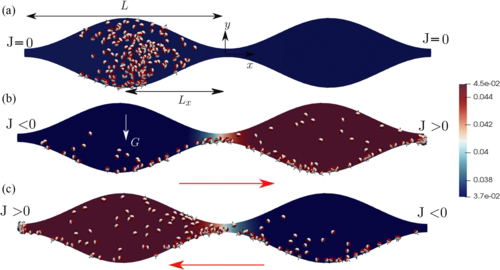<< Millimeter-sized “surfers” can self-propel across a vibrating liquid surface, interacting with other surfers to create collective patterns. >>
<< Self-propelled objects can move in mesmerizing patterns. The collective movements of groups of such objects typically occur in one of two flow regimes: the inertial regime—think swirling schools of fish in water—or the viscous regime—think swarming colonies of bacteria in mucus. Some self-propelled objects can travel in both flow regimes, a possibility that is less explored. >>️
AA << have studied the motion of a new system of self-propelled objects that move in this intermediate regime, finding that the objects organize into several distinct and tunable motion patterns. >>️️
<< Pairs of self-propelled surfers observed by the team move in one of seven different patterns (the video shows five). These include the “orbit,” where a pair of surfers rotate around a central point; the “tailgate,” where one surfer closely follows another, head to tail in a linear path; and the “jackknife,” where a pair of perpendicular surfers rotate stern to stern around their collision point. >>
<< When only one surfer was present, these mismatched amplitudes propelled the surfer in the direction of its bow. When there were two surfers close to each other, interactions among the waves caused the surfers to either repel each other so that they moved in opposite directions or to come together so that they collectively traced one of seven distinct patterns. >>️
️
Maggie Hudson. Synchronized Surfing of Self-Propelled Particles. Physics 16, s156. Nov 7, 2023.
Ian Ho, Giuseppe Pucci, Anand U. Oza, Daniel M. Harris. Capillary surfers: Wave-driven particles at a vibrating fluid interface. Phys. Rev. Fluids 8, L112001. Nov 7, 2023.
Anand U. Oza, Giuseppe Pucci, Ian Ho, Daniel M. Harris. Theoretical modeling of capillary surfer interactions on a vibrating fluid bath. Phys. Rev. Fluids 8, 114001. Nov 7, 2023.
Keywords: gst, waves, wave-wave, capillary waves, particles, self-propelled particles, fluid-particle interactions, wave-particle interactions








